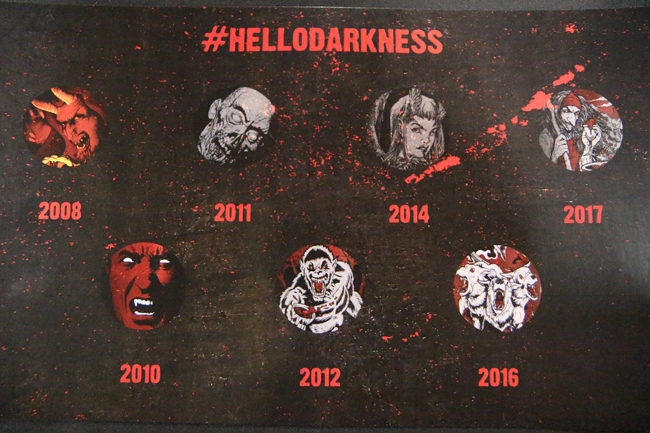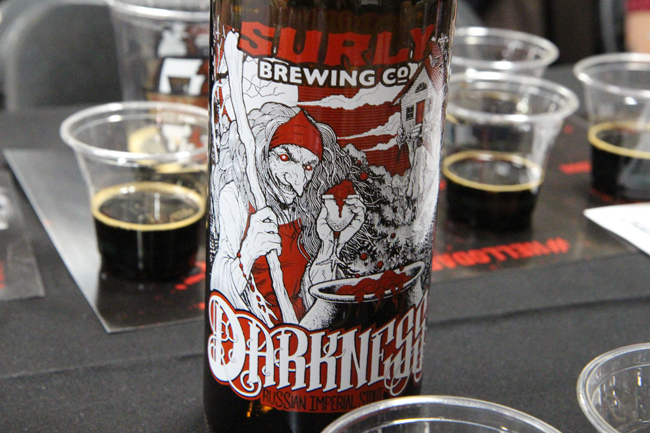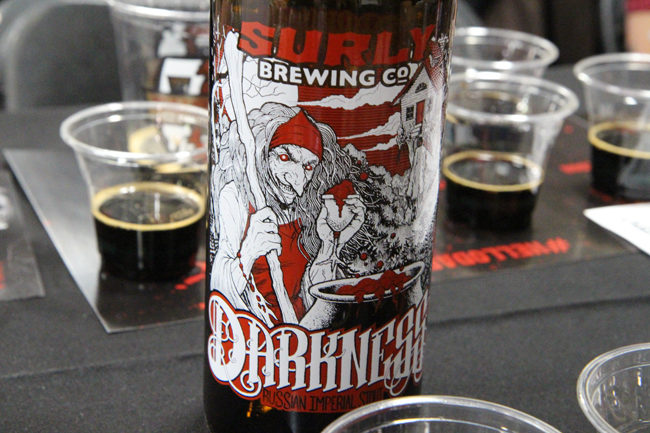
In any other context, the words “hello darkness” would bring the line “my old friend” to the tip of your tongue, instantly evoking The Sound of Silence. But the room was anything but silent as death metal blared over the speakers at Surly Brewing Company’s Brooklyn Center brewery last night, and our tongues were treated to a vintage (or “vertical”) tasting of Surly Darkness.
This Russian Imperial Stout, released annually on Darkness Day (this year occurring on Saturday, October 21), has become coveted among beer enthusiasts across Minnesota and nationwide. With Darkness, Surly wanted to do something special for its most loyal fans that is representative of its overall image — big, bold, extreme. The beer’s rich, complex flavors and ability to age for extended periods have made it a collectors item. New bottles typically retail for $20-$25, with older vintages peaking at $400-$500 on the secondary market with increasing scarcity and age; even empty bottles have fetched upwards of $100 for the artwork and as memorabilia. Darkness was also the first beer and event of this type in Minnesota, taking cues from peers like Three Floyds Brewing in Indiana and their Dark Lord Day.
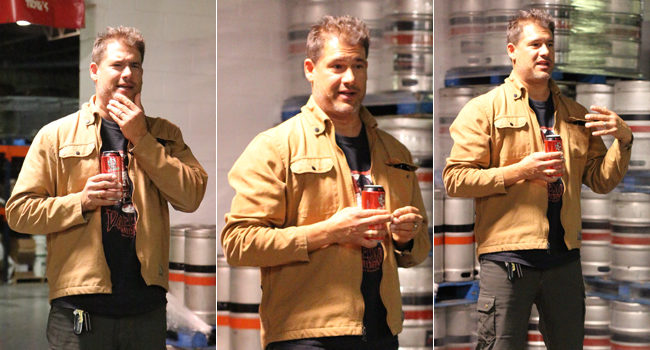
Yet Darkness Day itself is about more than just a beer. In the words of Surly founder and president Omar Ansari during his opening remarks, “It is an event to show appreciation for our customers,” where a community known as Surly Nation comes together in a shared experience centered around beer.
Surly’s #HelloDarkness tasting Wednesday night provided a similar, smaller opportunity to come together around Darkness. After a brief company history of Surly by Ansari, Surly’s lab technician and quality control specialist Riley Seitz gave an introduction to the tasting portion of the event. The idea was to provide a unique tasting opportunity and receive tasting notes from a variety of palates.
Nearly 50 Surly enthusiasts and members of the media were in attendance. Because beer — like wine — teems with microorganisms and other organic compounds, its character changes over time. According to head brewer Ben Smith, “Although the recipe has stayed pretty much consistent over the years, it is a live product, and you will see variation due to the ingredients, environment, brewing process, and other factors, … and perception of these variations year to year as well as the changes over time can be highly subjective.”
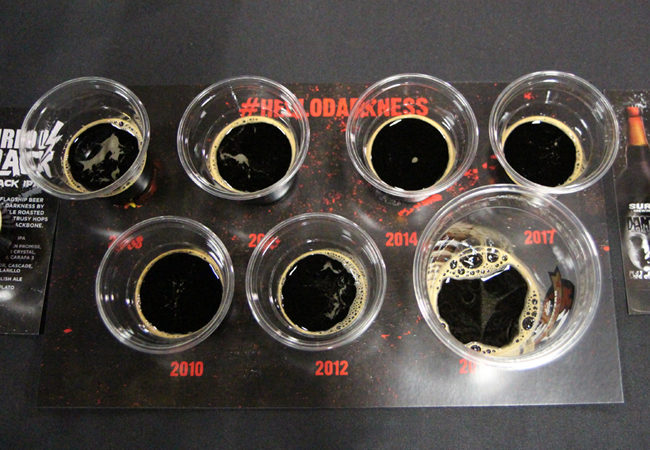
Guests were provided with tasting notes from a panel to guide their experience and were given time to sample a slate of seven vintages dating back to 2008. A show of hands following the tasting revealed a relatively even distribution of personal favorites. In speaking with attendees, we learned that most found it difficult to produce an absolute ranking, but a few recurring notes emerged:
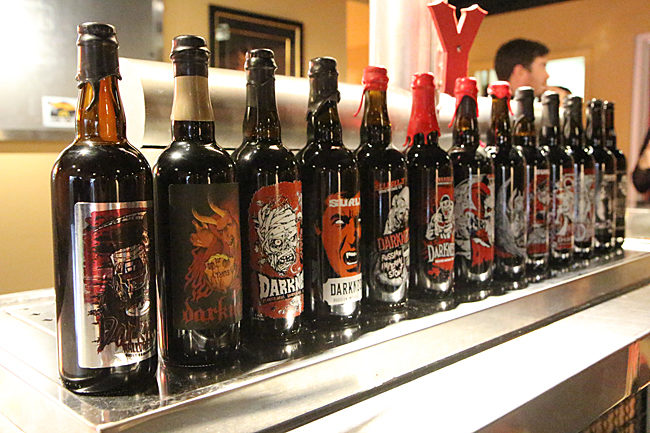
2008 — This, the oldest vintage, had strong umami flavors, reminiscent of soy sauce and smoked meat, which are rare in beer (and tend to be polarizing) but can develop over long periods of time or through the addition of adjunct ingredients.
2012 — This vintage was distinctly sweeter than the others, not cloying, but sweet enough to balance out some of the bitterness from the roasted malts (the author’s favorite).
2014 — The only tasting vintage aged in barrels, which imparted aromas and flavors of coconut, vanilla, and toffee.
2017 — The newest vintage was arguably the most complex, with aromas of vanilla and molasses followed by flavors of dark chocolate and dried fruit that lingered pleasantly due in part to the higher level of carbonation. While prior vintages have peaked after one to three years of aging, this year’s release will possibly be the most ready to drink at its time of release. Its rich flavors make it ideal for pairing with foods (smoked or braised meats, stews, even desserts like a brownie or creme brulee, where it would complement the chocolate and vanilla notes), and a bottle can easily be shared among three or four friends.
Darkness also features work by different local artists and designers, usually an interpretation of a mythical or fictional figure befitting the dark creation. This year’s featured artist, Adam Sward, was on hand to describe his inspiration for the label’s depiction of Baba Yaga, chosen due to her roots in Slavic folklore (an homage to the Russian origins of the beer style). It’s also noteworthy that Baba Yaga is a female character, a category that Sward felt has been underrepresented on Darkness artwork (this was only the second female label character appearing in the beer’s 11-year history).
Darkness Day takes place this Saturday, October 21 at the Brooklyn Center brewery, with retail sales beginning across the brewery’s distribution footprint one to two weeks thereafter.
